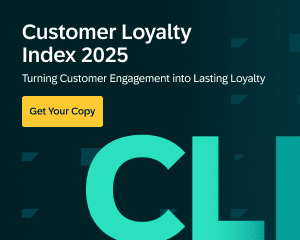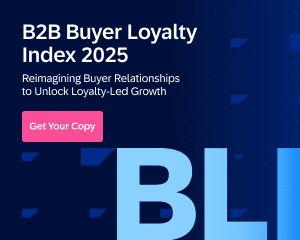Marketers today are under more pressure than ever. You’re expected to do more with less, personalize every interaction, and prove ROI faster, all while keeping customers engaged across channels. That’s where marketing automation comes in.
Automation has shifted from being a tactical add-on to the backbone of modern customer engagement. It’s powering real-time personalization, freeing teams from repetitive tasks, and delivering measurable growth in ways manual processes never could.
The statistics that follow show just how far automation has come, how widely it’s being adopted, and why it’s now a critical driver of customer loyalty and long-term business success.
Marketing Automation Adoption and Growth
Adoption of marketing automation has surged in recent years, and the momentum shows no signs of slowing down. What was once seen as a competitive advantage is now a baseline expectation for any brand that wants to engage customers at scale. These statistics highlight how deeply automation is shaping the marketing landscape.
96% of marketers have used or plan to use automation[DemandSage]
With nearly every marketer already using or planning to use automation, the risk of falling behind is real. If your brand isn’t automating, you’re not just missing efficiencies, you’re ceding ground to competitors who are delivering faster, smarter, more personalized engagement.
The global marketing automation market was valued at $6.65 billion in 2024 and is projected to reach $15.58 billion by 2030 [InBeat]
The rapid growth of the automation market tells its own story. Investment is more than doubling over the next few years, reflecting how central automation has become in driving ROI. This isn’t just about new brands coming on board, it’s about existing users expanding into advanced orchestration, AI, and cross-channel campaigns to maximize performance.
92% of marketers are already using AI in 2025 [SAP Emarsys]
AI is embedded in the way marketers work every day. From personalizing emails to predicting churn, AI is transforming automation into something more dynamic: a system that reacts in real time to customer behavior. For marketers, that means moving beyond batch-and-blast campaigns to deliver always-on engagement that feels personal at scale.

Time Savings and Efficiency
Every marketer knows the feeling of being stretched too thin. Campaign deadlines keep coming, customer expectations keep rising, and there’s never enough time in the day. Marketing automation helps close that gap. By taking care of repetitive tasks, it gives teams the space to focus on strategy, creativity, and the experiences that truly move the needle. These statistics show the scale of the efficiency gains automation can deliver.
71% of marketers use automation for email marketing [DemandSage]
Email remains the launchpad for automation. More than seven in ten marketers already automate email campaigns, using triggers and personalization to deliver the right message at the right time. What starts with email often becomes the foundation for a broader omnichannel strategy. Even small steps into automation can quickly generate big improvements in relevance and efficiency.
Automation saves marketers an average of 2.3 hours per campaign [SAP Emarsys]
Time savings might sound like a modest win, but across dozens of campaigns the hours quickly add up. According to SAP Emarsys research, marketers are reclaiming more than two hours every time they run a campaign. That is time teams can reinvest into higher-value work such as refining segmentation, testing creative, or experimenting with new channels. In an environment where every resource counts, automation doesn’t just save time. It unlocks new opportunities for growth.
Revenue and ROI Impact
Efficiency alone isn’t enough. Marketers need to show clear returns on every dollar they spend, and automation consistently proves its value. From higher conversion rates to stronger customer retention, automation drives results that make a tangible difference to the bottom line. These statistics highlight how automation translates into measurable business growth.
Every $1 invested in automation returns $5.44 [The CMO]
Marketing automation delivers one of the strongest returns in the martech stack. Research shows that for every dollar invested, businesses generate more than five dollars in return over three years. That level of ROI makes automation one of the most cost-effective ways to grow. It also strengthens the case for moving beyond basic triggers into more advanced, orchestrated campaigns that deliver value at scale.
Marketing automation can increase revenues by 34% on average [The CMO]
Revenue growth is the clearest measure of success for any marketing investment. On average, companies using automation see revenues climb by more than a third. That lift comes from higher conversion rates, improved retention, and greater lifetime value, all tied to more relevant and timely engagement. It shows that automation doesn’t just make marketing easier, it makes it significantly more effective.
60% of marketers report higher engagement and 58% higher loyalty after adopting AI [SAP Emarsys]
The financial impact of automation is driven by customer behavior. SAP Emarsys research shows that six in ten marketers have seen engagement increase after adopting AI, and almost as many report stronger loyalty. More engaged and loyal customers buy more often, spend more per transaction, and are less likely to churn. These gains compound over time, turning automation into a long-term growth engine rather than a short-term fix.
Customer Engagement and Loyalty
For all the talk of ROI and efficiency, the real test of automation is its impact on customers. Engagement and loyalty are what turn one-off buyers into long-term advocates. Automation makes it possible to deliver the right experience at the right moment, building stronger connections that last. These statistics show how automation is helping brands stay relevant and trusted.
More than 60% of marketers say automation improves customer experience and communication [DemandSage]
Automation is not only about saving time or generating revenue. Marketers say its greatest benefit lies in the customer experience. When communications are triggered by real behaviors and tailored to individual preferences, customers feel understood and valued. That relevance deepens trust, drives repeat purchases, and strengthens brand loyalty in ways that one-size-fits-all marketing cannot.
Abandoned cart push automations deliver a 10.5% conversion rate [SAP Emarsys]
One of the clearest examples of automation’s impact is cart recovery. According to SAP Emarsys benchmarks, abandoned cart push messages deliver conversion rates above 10 percent. That means one in ten customers who would have walked away without completing their purchase are brought back through timely, automated nudges. The revenue potential of this kind of lifecycle automation is massive, especially when scaled across large audiences.
Future Investment in Automation
With adoption already high and ROI proven, investment in marketing automation is set to accelerate. Brands aren’t just maintaining budgets, they are doubling down on AI, orchestration, and personalization to stay competitive. These statistics highlight how marketing leaders are planning for the future.
70% of marketing leaders plan to increase automation investment in 2025 InBeat
Most marketing leaders aren’t standing still. Seven in ten say they will increase investment this year, showing how confident they are in automation’s ability to deliver results. The push to spend more also reflects competitive pressure. If your peers are scaling their automation programs, it is risky to be the one brand left behind.
44% of consumer products marketers are making high investment in AI-powered engagement [SAP Emarsys]
Consumer products is one of the most competitive sectors, and loyalty is notoriously hard to win. Nearly half of marketers in this space are already making significant investments in AI-driven automation. The focus is on engaging customers more intelligently, reducing churn, and strengthening relationships in markets where switching costs are low and alternatives are everywhere.
64% of marketers plan to increase AI spend in 2025 [SAP Emarsys]
Automation and AI are increasingly inseparable. Almost two-thirds of marketers plan to raise their AI budgets this year, underlining how central machine learning has become to personalization and predictive engagement. This isn’t experimental spend anymore. It is a recognition that AI-driven automation is the future of how marketers will build and sustain customer relationships.
Why Automation Needs to Be at the Heart of Your Strategy
Marketing automation has proven itself as far more than a tactical tool. The statistics show that it drives efficiency, delivers measurable ROI, and deepens customer engagement in ways manual marketing simply can’t match.
The message for marketers is clear. Automation is the foundation for building personalized experiences at scale and proving value in a competitive environment. Brands that invest now will be the ones that earn loyalty, increase revenue, and stay ahead of the curve in 2026 and beyond.
👉 Ready to see how automation can transform your marketing? Book a demo with SAP Emarsys and discover how to put these insights into action.







